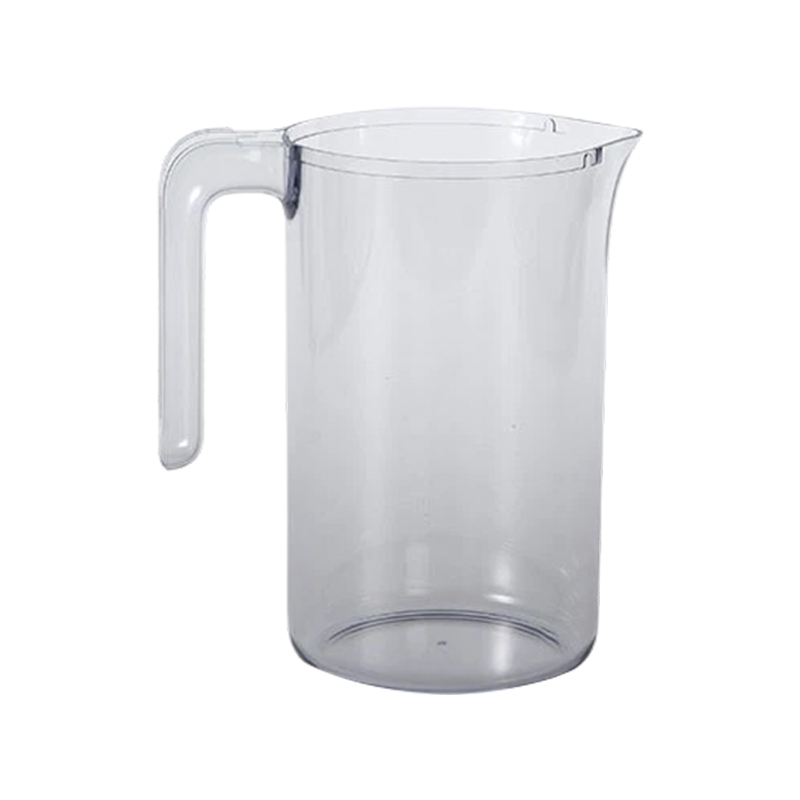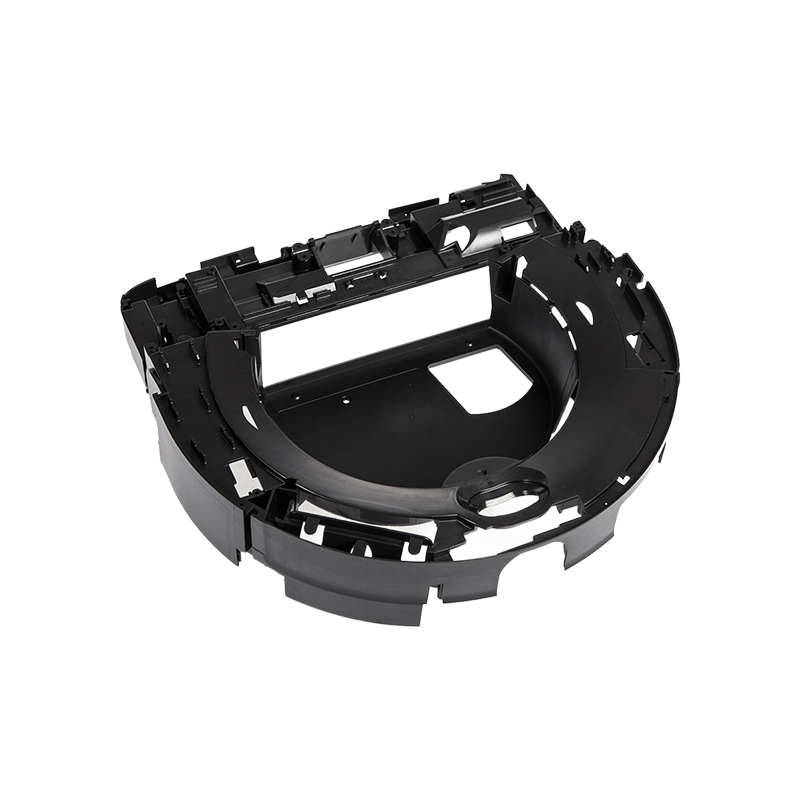How do sweeping machine housing mold components achieve a "seamless fit" industrial aesthetic?
Release Time : 2025-11-21
In today's smart home products that increasingly pursue minimalism and integration, the appearance of sweeping robots has long transcended its role as a functional container, becoming an important carrier reflecting brand image and user experience. The smooth curves, perfectly fitted seams, and delicate textures of high-gloss or matte finishes that consumers see at first glance all stem from the extremely precise manufacturing of the outer shell mold components. The so-called "seamless fit" industrial aesthetic is not an ideal line on a design drawing, but a real result sculpted by dozens of mold details, including parting line control, fit tolerances, ejection balance, and surface replication. Sweeping machine housing mold components are the "invisible sculptors" that realize this aesthetic.
1. Micron-level fit tolerances: Making seams "disappear" from the visual eye
Sweeping robots typically consist of multiple components such as the top cover, bottom shell, dustbin door, and wheel covers. These components need to present a near-unified visual effect after assembly. This relies on ultra-high precision five-axis CNC machining and slow wire EDM during mold core processing to ensure that the flatness, perpendicularity, and contour of all mating surfaces meet the standards. Simultaneously, the mold guiding system precisely aligns at the moment of mold closing, eliminating misalignment and flash. The smooth, effortless feel when a user's fingertip glides across the seams of the outer shell is a testament to the meticulous craftsmanship of the mold components down to the millimeter.
2. High-fidelity replication of complex curved surfaces: From digital model to real touch
Sweeping machine housing often employs large radius transitions and double-curvature streamlined shapes to reduce wind resistance and enhance integration with home décor. Such free-form surfaces are prone to shrinkage, weld lines, or uneven gloss if the mold surface treatment is poor. High-end molds use mirror polishing or texture etching processes to perfectly replicate the flow of light and shadow from the design onto the plastic parts. For example, high-gloss areas must meet the SPI-A1 level mirror standard, while anti-slip areas use customized textured patterns. The mold steel itself must possess excellent wear resistance and corrosion resistance to ensure surface consistency even after thousands of injection molding cycles, giving each product the same high-end feel.
3. Hidden Structural Design: A Silent Fusion of Function and Aesthetics
"Seamless" refers not only to exterior seams but also to the invisible integration of functional elements such as sensor windows, charging contacts, and speaker openings. Mold engineers must precisely mold micro-hole arrays or light-transmitting pillars in thin-walled areas without compromising strength, ensuring a tight fit with the internal PCB. For example, the lidar window must be integrally molded with the top cover and optically transparent; the mold must employ a pinless design and precise temperature control via hot runners to avoid any stress marks affecting signal penetration. This "invisible precision" is the key difference between high-end robotic vacuum cleaners and ordinary household appliances.
4. Ejection and Deformation Control: Ensuring Smoothness After Assembly
Even with successful demolding, uneven ejection or cooling can still cause warping of the outer shell, resulting in uneven gaps after assembly. To address this, the mold incorporates a micro-ejector or push-plate system in key stress areas, coupled with conformal cooling channels, ensuring uniform shrinkage across all parts of the product. CAE mold flow analysis predicts deformation trends in advance, guiding mold pre-deformation compensation. The final product's shell flatness error is controlled within 0.1mm/m, ensuring a tight fit with components such as the base shell and wheel assembly, eliminating "uneven shoulders" or "flared mouth" phenomena.
5. Modular and Quick-Change Design: Safeguarding Consistency in Mass Production
To meet the demands of multi-model co-production, advanced molds employ standardized mold bases and quick-change insert systems. When changing colors or making minor modifications, only a portion of the mold core needs replacement, significantly reducing debugging time while ensuring consistent appearance between new and old batches. This flexible manufacturing capability allows "seamless aesthetics" to exist not only in the first prototype but also throughout the entire process of mass production at the million-unit level.
The "seamless fit" of the sweeping machine housing is the culmination of a deep dialogue between industrial design and mold engineering. Every invisible parting line, every precise snap-fit, and every inch of uniform shine embodies the meticulous collaboration of mold components at the micrometer scale. It imbues cold plastic with warmth and order, and allows intelligent cleaning equipment to truly integrate into the aesthetic context of modern homes—this is the silent poetry that molds bestow upon products.
1. Micron-level fit tolerances: Making seams "disappear" from the visual eye
Sweeping robots typically consist of multiple components such as the top cover, bottom shell, dustbin door, and wheel covers. These components need to present a near-unified visual effect after assembly. This relies on ultra-high precision five-axis CNC machining and slow wire EDM during mold core processing to ensure that the flatness, perpendicularity, and contour of all mating surfaces meet the standards. Simultaneously, the mold guiding system precisely aligns at the moment of mold closing, eliminating misalignment and flash. The smooth, effortless feel when a user's fingertip glides across the seams of the outer shell is a testament to the meticulous craftsmanship of the mold components down to the millimeter.
2. High-fidelity replication of complex curved surfaces: From digital model to real touch
Sweeping machine housing often employs large radius transitions and double-curvature streamlined shapes to reduce wind resistance and enhance integration with home décor. Such free-form surfaces are prone to shrinkage, weld lines, or uneven gloss if the mold surface treatment is poor. High-end molds use mirror polishing or texture etching processes to perfectly replicate the flow of light and shadow from the design onto the plastic parts. For example, high-gloss areas must meet the SPI-A1 level mirror standard, while anti-slip areas use customized textured patterns. The mold steel itself must possess excellent wear resistance and corrosion resistance to ensure surface consistency even after thousands of injection molding cycles, giving each product the same high-end feel.
3. Hidden Structural Design: A Silent Fusion of Function and Aesthetics
"Seamless" refers not only to exterior seams but also to the invisible integration of functional elements such as sensor windows, charging contacts, and speaker openings. Mold engineers must precisely mold micro-hole arrays or light-transmitting pillars in thin-walled areas without compromising strength, ensuring a tight fit with the internal PCB. For example, the lidar window must be integrally molded with the top cover and optically transparent; the mold must employ a pinless design and precise temperature control via hot runners to avoid any stress marks affecting signal penetration. This "invisible precision" is the key difference between high-end robotic vacuum cleaners and ordinary household appliances.
4. Ejection and Deformation Control: Ensuring Smoothness After Assembly
Even with successful demolding, uneven ejection or cooling can still cause warping of the outer shell, resulting in uneven gaps after assembly. To address this, the mold incorporates a micro-ejector or push-plate system in key stress areas, coupled with conformal cooling channels, ensuring uniform shrinkage across all parts of the product. CAE mold flow analysis predicts deformation trends in advance, guiding mold pre-deformation compensation. The final product's shell flatness error is controlled within 0.1mm/m, ensuring a tight fit with components such as the base shell and wheel assembly, eliminating "uneven shoulders" or "flared mouth" phenomena.
5. Modular and Quick-Change Design: Safeguarding Consistency in Mass Production
To meet the demands of multi-model co-production, advanced molds employ standardized mold bases and quick-change insert systems. When changing colors or making minor modifications, only a portion of the mold core needs replacement, significantly reducing debugging time while ensuring consistent appearance between new and old batches. This flexible manufacturing capability allows "seamless aesthetics" to exist not only in the first prototype but also throughout the entire process of mass production at the million-unit level.
The "seamless fit" of the sweeping machine housing is the culmination of a deep dialogue between industrial design and mold engineering. Every invisible parting line, every precise snap-fit, and every inch of uniform shine embodies the meticulous collaboration of mold components at the micrometer scale. It imbues cold plastic with warmth and order, and allows intelligent cleaning equipment to truly integrate into the aesthetic context of modern homes—this is the silent poetry that molds bestow upon products.








